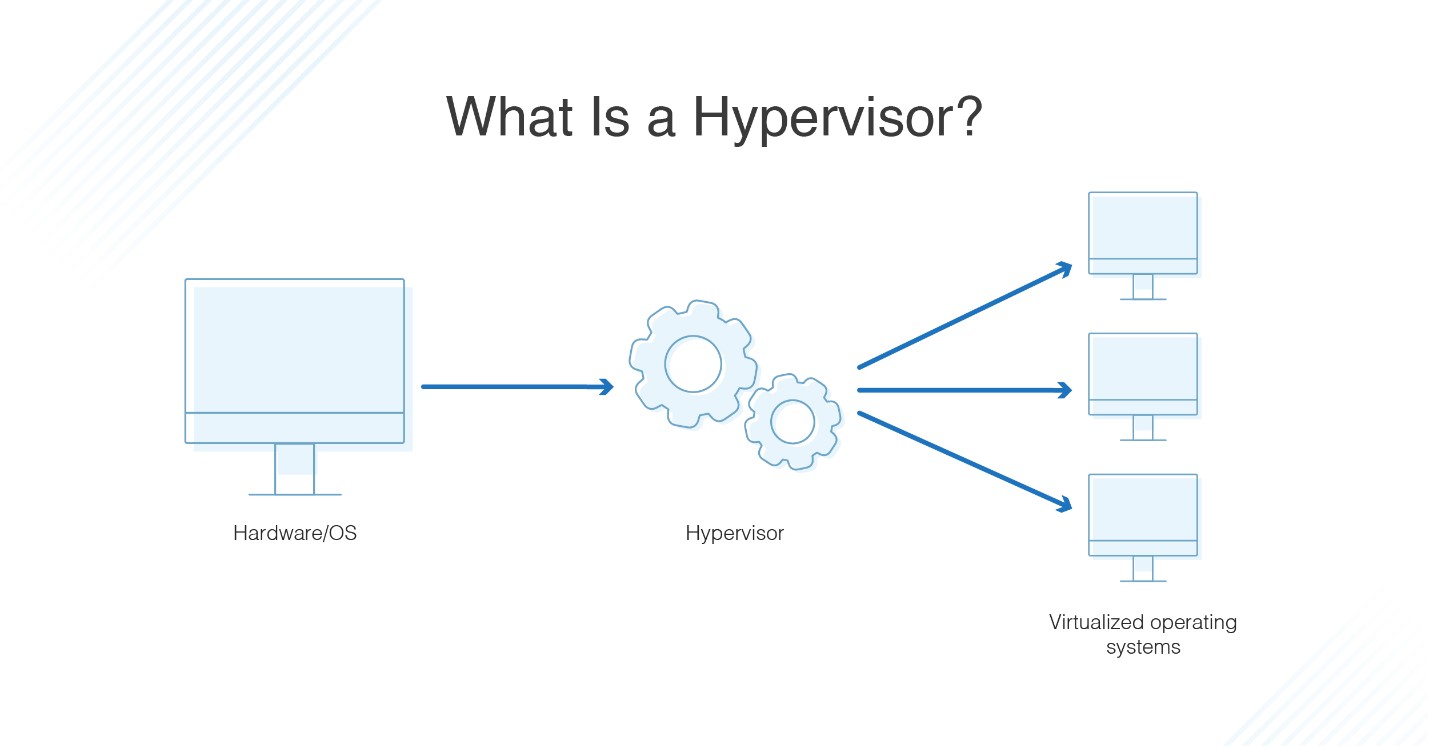The IT sphere is constantly talking about cloud computing and virtual servers. One gets the impression that these technologies were invented so long ago and are already outdated. In fact, this is not the case, because few people know about the advantages of hypervisors. This technology is inferior in popularity to modern virtualization methods, but its application opens up new possibilities of cloud computing systems.
Is it a hypervisor?
A hypervisor is software that allows you to separate physical hardware from programs running in a computer’s operating system. It cannot be “touched”, because it is just a unique software.
When using hypervisor technology, it is possible to manage several virtual devices from one host computer at once. They act as guest operating systems. This kind of work makes the most efficient use of computing resources. The equipment receives high bandwidth. In short, the hypervisor is the real driving force that enables virtualization and VPS to function properly.
Virtualization is a technology that allows you to create several virtual machines from one physical computer or server. The real hardware is called the host. It is characterized by the presence of powerful processors, disk and RAM, etc. Installation of special software (software) allows you to divide server resources into several virtual computers.
Advantages of hypervisors
Logical unification of several virtual machines does not occur, although they can work on the same physical server. Their mutual distribution takes place. This function means that if one device starts to malfunction, the other one remains fully functional. The tendency of the stability of individual OSes is observed when using different or one physical computer.

Identical machines created using hypervisor technology have good mobility. Since they are not tied to a single server, they can easily be moved between local or remote servers. Such a procedure is performed much easier, if compared with standard applications on an “iron” server.
Types of hypervisors
It is accepted to divide hypervisors into two types – “Type 1” and “Type 2”. Despite this, there is a third variety (hybrid), which combines the properties of both species.
Type 1
This variety includes all technologies that have received the name “autonomous”, “thin”, “microcore”, “executed on a clean gland”. The first type of hypervisor is characterized by a compact and specific operating system. It is installed directly on a real server or hard drive. Because of this, it has similar features with the OS:
“View from the bottom” – when the available set of resources is managed: memory, processor time, programs that want to use computer resources.
“View from above”. An abstract amount of resources intended for the correct functioning of programs is used here.
Guest operating systems that use the first type of hypervisor and function normally on it get the opportunity to run virtual machine services. This creates the illusion that with such an OS you can fully control all computer resources. By analogy, if a physical machine with supervisor mode access were used.
The first type (hardware hypervisor) has an important feature – its code takes up hundreds of times less space than modern OSes. It follows that the possibility of a critical error is reduced several times. The security of the system, which is responsible for virtualization, is achieved thanks to the complete transfer of the resources of the physical machine under the control of the virtual one.
Hypervisors of the first type are VMware ESXi, Xen and others.
VMware ESXi
This hypervisor of the first level belongs to stand-alone. You can start using them for free. VMware applies this approach to most of its products. The paid version is distinguished by extended functionality. Users who have used this product note simple management of virtual machines, small code, high stability.
Xen
It was developed by researchers in 2003. The company XenSource undertook the distribution of the new technology. A public release was made this year. The Xen hypervisor supports paravirtualization and hardware virtualization, which makes it a hybrid variety at the same time. It is a classic open source cross-platform product. The minimum amount of code has a positive effect on security.
Type 2

It has another name – host. Such technology is installed as a “second layer” on top of the installed operating system. In essence, this type is an application of the main operating system. Linux is often chosen for stable operation. All physical resources and emulation are managed from the host operating system. The second type of hypervisor has less authority. These include KVM, Oracle VM VirtualBox and others.
KVM
Hypervisor kvm stands for Kernel-based Virtual Machine. It was created in 2006. Almost immediately, it was used in the Linux 2.6.20 kernel. The kvm.ko module is responsible for virtualization. KVM is open source. It contains QEMU components for working in user mode and modules for Intel, AMD.
Oracle VM VirtualBox
The hypervisor can be used on any operating system. It was created in 2007 by specialists from Sun Microsystems. Like many similar products, it is distinguished by its open source code, which allows you to modify it an unlimited number of times. If VirtualBox is installed on a 32-bit OS, it is able to work with 64-bit guest systems.
Which hypervisor to choose
Before determining the appropriate technology, it is necessary to consider the functions it performs:
- copying hardware resources of a real server;
- following the instructions of the machine with complete safety;
- the commands to the created OS should not affect the physical host machine.
Depending on the purpose, financial capabilities, and “iron” power, the most appropriate type of hypervisor is selected. For example, if you choose VMware ESXi, you need to be ready to buy a license and have powerful computing equipment. It is better to entrust the choice of technology to professionals.

